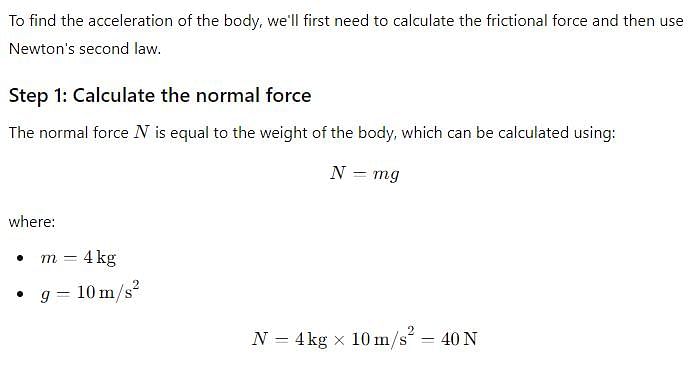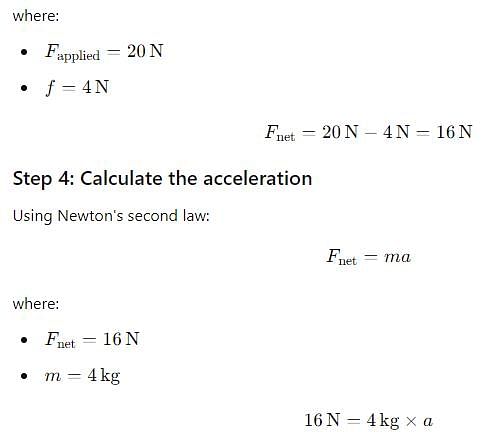Test: Friction (June 5) - JEE MCQ
10 Questions MCQ Test - Test: Friction (June 5)
After the body starts moving, the friction involved with motion is
| 1 Crore+ students have signed up on EduRev. Have you? Download the App |
A block of mass 1 kg lies on a horizontal surface in a truck. The coefficient of static friction between the block and the surface is 0.6. If the acceleration of the truck is 5 ms-2, the frictional force acting on the block is
A particle moves in a circle with a constant speed of 6m /s. Its centripetal acceleration is 120 m/s2, The radius of the circle is
A body rests on an inclined plane and the angle of inclination is varied till the body just begins to slide down. The coefficient of friction is  . What is the angle of inclination?
. What is the angle of inclination?
A block of mass 2kg rests on a plane inclined at an angle of 30o with the horizontal. The coefficient of friction between the block and the surface is 0.7. The frictional force acting on the block is
A particle moves in a circle of radius 0.30m with a constant speed of 6m/s. Its centripetal acceleration is
When a wheel rolls on a level road, the direction of frictional force at the point of contact of wheel and ground is:
A force of 20 N is applied on a body of mass 4 kg kept on a rough surface having coefficient of friction 0.1. Find acceleration of body. Take g = 10 m/s2






















